Resident Crews of the International Space Station (ISS)
![]()
ISS: Expedition 67 |
 |
 |
 |
crew poster |
|
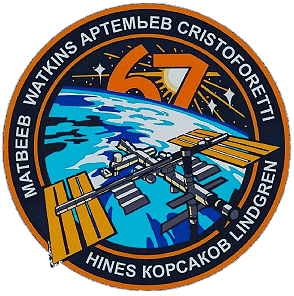 |
 |
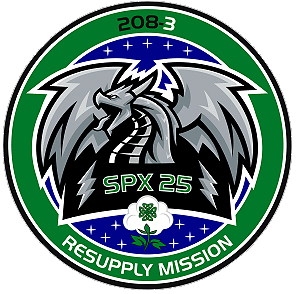 |
 |
![]()
Crew, launch- and landing data
| No. | Nation | Surname | Given names | Position | Spacecraft (launch) |
Launch date |
Launch time |
Spacecraft (landing) |
Landing date |
Landing time |
Mission duration |
Orbits |
| 1 | Marshburn | Thomas Henry "Tom" | ISS-CDR * | SpaceX Crew-3 | 11.11.2021 | 02:03:30 UTC | SpaceX Crew-3 | 06.05.2022 | 04:43:23 UTC | 176d 02h 39m 53s | 2832 | |
| 2 | Chari | Raja Jon Vurputoor "Grinder" | Flight Engineer-10 | SpaceX Crew-3 | 11.11.2021 | 02:03:30 UTC | SpaceX Crew-3 | 06.05.2022 | 04:43:23 UTC | 176d 02h 39m 53s | 2832 | |
| 3 | Maurer | Matthias Josef | Flight Engineer-13 | SpaceX Crew-3 | 11.11.2021 | 02:03:30 UTC | SpaceX Crew-3 | 06.05.2022 | 04:43:23 UTC | 176d 02h 39m 53s | 2832 | |
| 4 | Barron | Kayla Sax | Flight Engineer-12 | SpaceX Crew-3 | 11.11.2021 | 02:03:30 UTC | SpaceX Crew-3 | 06.05.2022 | 04:43:23 UTC | 176d 02h 39m 53s | 2832 | |
| 5 | Artemyev | Oleg Germanovich | ISS-CDR * | Soyuz MS-21 | 18.03.2022 | 15:55:18.451 UTC | Soyuz MS-21 | 29.09.2022 | 10:57:12.8 UTC | 194d 19h 01m 54s | 3120 | |
| 6 | Matveyev | Denis Vladimirovich | Flight Engineer-2 | Soyuz MS-21 | 18.03.2022 | 15:55:18.451 UTC | Soyuz MS-21 | 29.09.2022 | 10:57:12.8 UTC | 194d 19h 01m 54s | 3120 | |
| 7 | Korsakov | Sergei Vladimirovich | Flight Engineer-3 | Soyuz MS-21 | 18.03.2022 | 15:55:18.451 UTC | Soyuz MS-21 | 29.09.2022 | 10:57:12.8 UTC | 194d 19h 01m 54s | 3120 | |
| 8 | Lindgren | Kjell Norwood | Flight Engineer-14 | SpaceX Crew-4 | 27.04.2022 | 07:52:55 UTC | SpaceX Crew-4 | 14.10.2022 | 20:55:27 UTC | 170d 13h 02m 32s | 2720 | |
| 9 | Hines | Robert Thomas "Farmer", Jr. | Flight Engineer-15 | SpaceX Crew-4 | 27.04.2022 | 07:52:55 UTC | SpaceX Crew-4 | 14.10.2022 | 20:55:27 UTC | 170d 13h 02m 32s | 2720 | |
| 10 | Cristoforetti | Samantha | Flight Engineer-17 | SpaceX Crew-4 | 27.04.2022 | 07:52:55 UTC | SpaceX Crew-4 | 14.10.2022 | 20:55:27 UTC | 170d 13h 02m 32s | 2720 | |
| 11 | Watkins | Jessica Andrea | Flight Engineer-16 | SpaceX Crew-4 | 27.04.2022 | 07:52:55 UTC | SpaceX Crew-4 | 14.10.2022 | 20:55:27 UTC | 170d 13h 02m 32s | 2720 | |
| 12 | Prokopyev | Sergei Valerievich | Flight Engineer-4 | Soyuz MS-22 | 21.09.2022 | 13:54:49.531 UTC | Soyuz MS-23 | 27.09.2023 | 11:17:05.6 UTC | 370d 21h 22m 16s | 5936 | |
| 13 | Petelin | Dmitri Aleksandrovich | Flight Engineer-5 | Soyuz MS-22 | 21.09.2022 | 13:54:49.531 UTC | Soyuz MS-23 | 27.09.2023 | 11:17:05.6 UTC | 370d 21h 22m 16s | 5936 | |
| 14 | Rubio | Francisco Carlos "Frank" | Flight Engineer-6 | Soyuz MS-22 | 21.09.2022 | 13:54:49.531 UTC | Soyuz MS-23 | 27.09.2023 | 11:17:05.6 UTC | 370d 21h 22m 16s | 5936 |
* since May 04. 2022 Oleg Artemyev replaced Thomas Marshburn as ISS-CDR
 |
Expedition Report
|
ISS Expedition 67 began with the undocking of Russian
spacecraft Soyuz
MS-19 on March 30, 2022 at 07:21:03
UTC. The landing crew consisted of Anton Shkaplerov, Pyotr Dubrov and Mark Vande Hei. Three-and-a-half-hours later the crew landed safely in Kazakhstan. So, the new Expedition 67 consisted of ISS Commander Thomas Marshburn, Raja Chari, Matthias Maurer, Kayla Barron, Oleg Artemyev, Denis Matveyev and Sergei Korsakov. The private mission Ax-1 by Axiom Space launched on April 08, 2022 at 15:17:12 UTC and docked to the International Space Station on April 09, 2022 at 12:29 UTC. The crew members Michael Lopez-Alegria, Larry Connor, Mark Pathy and Eytan Stibbe became visitors to the resident crew. The first spacewalk in Expedition 67 was performed by Oleg Artemyev and Denis Matveyev on April 18, 2022 (6h 37m). Both installed and connected a control panel for the European robotic arm, a 37-foot-long (10.6 meter) manipulator system mounted to the recently arrived Nauka multipurpose laboratory module. They removed protective covers from the arm and installed handrails on Nauka. The arm will be used to move spacewalkers and payloads around the Russian segment of the station. On April 23, 2022 at 13:25 UTC, specialists from the state corporation Roscosmos carried out an unscheduled correction of the orbital altitude of the International Space Station to avoid "space junk". All operations were carried out according to the calculations of specialists from the TsNIIMash Mission Control Center (part of Roscosmos). For this maneuver, the engines of the cargo ship Progress MS-18 were used, which worked for 623 seconds and the momentum was 1.0 m/s. After the corrective maneuver, the altitude of the station's orbit was increased by 1.8 km. The SpaceX Crew-4 mission launched on April 27, 2022 from Launch Complex 39-A at NASA's Kennedy Space Center in Florida. This is the fourth crew rotation flight of the SpaceX Crew Dragon spacecraft on a Falcon 9 rocket following certification by NASA for regular flights to the space station as part of the agency's Commercial Crew Program. The SpaceX Crew-4 Freedom carried Crew Dragon Commander Kjell Lindgren, Pilot Robert Hines, Mission Specialist Samantha Cristoforetti from European Space Agency (ESA) and Mission Specialist Jessica Watkins to the space station for a six-month science mission. The Crew Dragon docked to the International Space Station on April 27, 2022 at 23:37:49 UTC. A second spacewalk occurred on April 28, 2022 (7h 42m). Oleg Artemyev and Denis Matveyev left the space station through the Poisk module. The duo jettisoned thermal blankets used to protect the arm during its July 2021 launch with Nauka. They also flexed the arm's joints, released launch restraints, and monitored the arm's ability to use two grapple fixtures. SpaceX Crew-3 undocked from the International Space Station on May 05, 2022 at 05:20 UTC On May 14, 2022 an ISS reboost was performed using Progress MS-18 thrusters. This reboost was to set to set the ballistic conditions for the launch of Progress MS-20. The engines started at 18:05 UTC and fired 659 seconds. After the corrective maneuver, the average orbit of the ISS increased by 1.900 meters. The launch of Boeing's unmanned CST-100 Starliner Boe-OFT-2 spacecraft on a United Launch Alliance Atlas V rocket occurred on May 19, 2022 at 22:54:47 UTC from Space Launch Complex 41 at Cape Canaveral Air Force Station (CCAFS) in Florida. The flight test should provide valuable data on the end-to-end performance of the Atlas V rocket, Starliner spacecraft, and ground systems, as well as in-orbit, docking, and landing operations. The data will be used as part of NASA's process of certifying Boeing's crew transportation system for carrying astronauts to and from the space station. The unmanned Starliner spacecraft docked to Harmony PMA-2 / IDA-2 of the International Space Station on May 21, 2022 at 00:28 UTC. Starliner undocked at 18:36:00 UTC for a parachute assisted landing at White Sands Space Harbor in New Mexico on May 25, 2022 at 22:49 UTC. The Progress MS-18 spacecraft undocked from the space station at 08:02:51 UTC on June 01, 2022. The launch of the unpiloted Russian Progress MS-20 occurred on June 03, 2022 at 9:32:16 UTC from the Baikonur Cosmodrome in Kazakhstan. The freighter delivers almost three tons material. It transports space experimentation, medical inspection and hygiene and hygiene items, clothing, standard food rations and good food for the crew members of this expedition. The Progress MS-20 spacecraft docked to the Zvezda module at the Russian segment on June 03, 2022 at 13:02 UTC. Progress MS-20 will remain docked at the station for several months before departing later in 2022 for its deorbit into Earth's atmosphere. On June 25, 2022 at 17:42 UTC Northrop Grumman's Cygnus completed its first limited reboost of the International Space Station. Cygnus' gimbaled delta velocity engine was used to adjust the space station's orbit through a reboost of the altitude of the space station. The maneuver lasted 5 minutes, 1 second and raised the station's altitude 1/10 of a mile at apogee and 5/10 of a mile at perigee. This Cygnus mission is the first to feature this enhanced capability as a standard service for NASA, following a test of the maneuver which was performed in 2018 during Cygnus's ninth resupply mission. Northrop Grumman's uncrewed Cygnus NG-17 spacecraft departed the International Space Station on June 28, 2022 more than four months after delivering 8,300 pounds (3,740 kilograms) of supplies, scientific investigations, commercial products, hardware, and other cargo to the orbiting laboratory for NASA. Flight controllers on the ground sent commands for the space station's Canadarm2 robotic arm to detach Cygnus from the Unity module's nadir port, then maneuver the spacecraft into position for its release at 11:07 UTC. Jessica Watkins monitored Cygnus' systems upon its departure from the space station. Following a deorbit engine firing on June 29, 2022 Cygnus began a planned destructive re-entry, in which the spacecraft - filled with trash packed by the station crew -safely burned up in Earth's atmosphere. SpaceX's 25th Commercial Resupply Services mission launched on July 15, 2022 at 00:44:22 UTC on a Falcon 9 rocket from Launch Complex 39A at NASA's Kennedy Space Center in Florida. Dragon SpX-25 or CRS-25 carried more than 4,500 pounds (2,040 kg) research, logistics and hardware for the Expedition 67/68 crew including a variety of NASA investigations, such like EMIT, which will identify the composition of mineral dust from Earth's arid regions and analyze dust carried through the atmosphere from deserts to see what effects it has on the planet, further advancing NASA's data contributions to monitoring climate change. Other investigations include studying the aging of immune cells and the potential to reverse those effects during postflight recovery, an investigation of how sutured wounds heal in microgravity, and a student experiment testing a concrete alternative for potential use in future lunar and Martian habitats. About 12 minutes after launch, Dragon separated from the Falcon 9 rocket's second stage and began a carefully choreographed series of thruster firings to reach the space station. Arrival to the station was on July 16, 2022. Dragon docked autonomously at 15:21 UTC to the forward-facing port of the station's Harmony module, with NASA astronauts Kjell Lindgren and Robert Hines monitoring operations from the station. Oleg Artemyev and Samantha Cristoforetti performed a third spacewalk in a row on July 21, 2022 (7h 05m). The following works were to be carried out: launch of eight YuZGU-55 nanosatellites and two Tsiolkovsky-Ryazan nanosatellites; Transfer of the platform with adapters from the "Poisk" module to the "Nauka" module; Installing an adapter for the ERA gripper arm on the Poisk module; Replacement of the protection frame for the CLU-2 video camera on the KE-2 end effector of the ERA gripper; Transferring the external EMMI control panel to storage mode on the science module by the ERA gripper; Closing the ERA gripper arm mounting system on the Nauka module with vacuum thermal insulation; installation of bollards on cargo booms GStM-1 and GStM-2; Moving the GStM-2 cargo boom from the Zarya module to the Poisk module. For the next spacewalk Oleg Artemyev and Denis Matveyev left the station using the Poisk airlock on August 17, 2022 (4h 01m). While working outside the station, the cosmonauts continued work on integrating the European remote manipulator ERA into the Russian segment of the ISS. The primary objective of the spacewalk was to install cameras on the European robotic arm, relocate an external control panel for the arm from one operating area to another, remove launch restraints near the two end effectors or "hands" of the arm, and test a rigidizing mechanism on the arm that will be used to facilitate the grasping of payloads. Spacesuit problems - voltage fluctuations - forced Oleg Artemyev to return early to the Poisk airlock compartment on an expedited bases to hook up to ISS power; mission control: "drop everything and start going back right away". The spacewalk was shorted and not all tasks were completed. During the spacewalk, the two cosmonauts completed the installation of two cameras on the European robotic arm prior to Oleg Artemyev's Orlan spacesuit showing abnormal battery readings about 2 hours and 17 minutes into the extravehicular activity. Mission Control in Moscow instructed Oleg Artemyev to return to the Poisk airlock to connect to the space station's power supply. Cosmonaut Sergei Korsakov, inside the station, placed the European robotic arm in a safe configuration, and Denis Matveyev safely returned to the Poisk airlock after completing some final clean-up activities outside of the International Space Station. The duo was never in any danger during the operations. The work left incomplete included the relocation of the arm's external control panel, and testing of a rigidizing mechanism on the arm that will be used to grasp payloads for movement outside the station. Dragon SpX-25 or CRS-25 left the International Space Station on August 19, 2022. Ground controllers at SpaceX in Hawthorne, California, sent commands at 15:05 UTC for Dragon to undock from the forward port of the station's Harmony module and fire its thrusters to move a safe distance away from the station. Controllers commanded a deorbit burn the following day. After re-entering Earth's atmosphere, the spacecraft made a parachute-assisted splashdown off the coast of Florida. Dragon carried back to Earth more than 4,000 pounds (1,814 kilograms) of supplies and scientific experiments that were designed to take advantage of the space station's microgravity environment. Splashing down off the coast of Florida enables quick transportation of the experiments to NASA's Space Station Processing Facility at the agency's Kennedy Space Center in Florida, allowing researchers to collect data with minimal sample exposure to Earth's gravity. Some of the scientific investigations that Dragon carried include: Space's impact on materials: The Materials International Space Station Experiment-15-NASA (MISSE-15-NASA) experiment tests, qualifies, and quantifies the impact of the low-Earth orbit environment on new materials and components, such as spacecraft materials and wearable radiation protection. Successful experiment results could have applications both in the harsh environments of space and on Earth. Spacesuit cooling: Spacesuit Evaporation Rejection Flight Experiment (SERFE) demonstrates a new technology using water evaporation to remove heat from spacesuits and maintain appropriate temperatures for crew members and equipment during spacewalks. The investigation determines whether microgravity affects performance and evaluates the technology's effect on contamination and corrosion of spacesuit material. Cell signaling in microgravity: The ESA (European Space Agency) sponsored investigation Bioprint FirstAid Handheld Bioprinter (Bioprint FirstAid) enables the rapid use of formerly prepared bio-inks, containing the patient's own cells, to form a band-aid patch in the case of injury. The Dragon spacecraft brought home a spacesuit (EMU No. 3015) worn by European Space Agency astronaut Matthias Maurer in March 2022, when the station crew noticed water leaking in Matthias Maurer's helmet after he returned to the lab's pressurized airlock. NASA has suspended use of U.S. spacesuits for non-emergency spacewalks until the suit is returned to Earth for inspection and analysis. Oleg Artemyev and Denis Matveyev performed another spacewalk on September 02, 2022 (7h 47m) using the Poisk airlock. This spacewalk completed unfinished tasks from a spacewalk August 17, 2022 which was cut short after Oleg Artemyev's spacesuit showed abnormal battery readings about 2 hours and 17 minutes into the spacewalk. The primary objectives of the spacewalk were to relocate an external control panel for the arm from one operating area to another and test a rigidizing mechanism on the arm that will be used to facilitate the grasping of payloads. Finally they extended the Strela-2 from Zarya to Poisk Following a three hour solo flight Soyuz MS-22 docked on September 21, 2022 at 17:06:34 UTC with the Rassvet module of the International Space Station. Sergei Prokopyev, Dmitri Petelin and Francisco Rubio became Flight Engineers of the Expedition 67. Among the US experiments are: Human Immune System Study: Microgravity causes changes in human immune cells that resemble aging, but happen faster than actual aging. Immunosenescence studies the effects of microgravity on cells involved in tissue regeneration and whether recovery occurs post-flight. Understanding whether and how the immune system recovers after return to Earth could support development of treatments to protect astronauts during future longduration spaceflight. Results could provide insight into whether effects of the biological aging process can be reversed. Earth Surface Mineral Dust Source Investigation: When strong winds on one continent stir up mineral rock dust, the airborne particles can travel thousands of miles to affect entirely different continents. Dust suspended in the air can heat or cool the atmosphere and Earth's surface. This heating or cooling effect is the focus of NASA's Earth Surface Mineral Dust Source Investigation mission. Data collected by the experiment will allow scientists to create a new mineral map of Earth's dust-producing regions. The map will improve computer models that scientists will use to assess the regional and global heating and cooling effects of mineral dust today and in the future. Biopolymer Research for In-Situ Capabilities: Biopolymer Research for In-Situ Capabilities looks at how microgravity affects the process of creating biopolymer soil composite, a concrete alternative made with on-site organic material such as lunar or Martian dust. Using resources available on site for construction on other planetary bodies reduces the need to take along materials, lowering cost and freeing up space on long-term missions. This process also offers an environmentally friendly concrete alternative for making structures on Earth. Cylindrical bricks are made aboard the space station and returned to Earth where their composition is analyzed. Suture In Space: As humans travel farther from our home planet, we need to prepare for medical emergencies occurring where there are no hospitals. The Suture in Space experiment will look at how tissues heal in weightlessness. Living tissue from biopsies will be cut and sewn back together, before being sent to space where astronauts will activate the cells to monitor the healing mechanisms. The samples will be frozen at set times to track how they progressed in space. rHEALTH ONE Microgravity Demonstration: There are unique challenges for monitoring crew health on deep-space exploration missions, including limited space for medical devices and the inability to return samples to Earth for analysis. The rHEALTH ONE Microgravity Demonstration investigation tests a modified, commercial off-the-shelf device that could be considered to determine the presence of medical conditions on future exploration missions. The technology could also provide timely, cost-effective, reliable, and convenient diagnostic tests for patients on Earth without access to robust healthcare infrastructure. |
EVA data
| Name | Start | End | Duration | Mission | Airlock | Suit | |
| EVA | Artemyev, Oleg | 18.04.2022, 15:00 UTC | 18.04.2022, 21:37 UTC | 6h 37m | ISS-67 | ISS - Poisk | Orlan-MKS No. 5 |
| EVA | Matveyev, Denis | 18.04.2022, 15:00 UTC | 18.04.2022, 21:37 UTC | 6h 37m | ISS-67 | ISS - Poisk | Orlan-MKS No. 4 |
| EVA | Artemyev, Oleg | 28.04.2022, 14:58 UTC | 28.04.2022, 22:40 UTC | 7h 42m | ISS-67 | ISS - Poisk | Orlan-MKS No. 5 |
| EVA | Matveyev, Denis | 28.04.2022, 14:58 UTC | 28.04.2022, 22:40 UTC | 7h 42m | ISS-67 | ISS - Poisk | Orlan-MKS No. 4 |
| EVA | Artemyev, Oleg | 21.07.2022, 14:50 UTC | 21.07.2022, 21:55 UTC | 7h 05m | ISS-67 | ISS - Poisk | Orlan-MKS No. 5 |
| EVA | Cristoforetti, Samantha | 21.07.2022, 14:50 UTC | 21.07.2022, 21:55 UTC | 7h 05m | ISS-67 | ISS - Poisk | Orlan-MKS No. 4 |
| EVA | Artemyev, Oleg | 17.08.2022, 13:53 UTC | 17.08.2022, 17:54 UTC | 4h 01m | ISS-67 | ISS - Poisk | Orlan-MKS No. 5 |
| EVA | Matveyev, Denis | 17.08.2022, 13:53 UTC | 17.08.2022, 17:54 UTC | 4h 01m | ISS-67 | ISS - Poisk | Orlan-MKS No. 4 |
| EVA | Artemyev, Oleg | 02.09.2022, 13:25 UTC | 02.09.2022, 21:12 UTC | 7h 47m | ISS-67 | ISS - Poisk | Orlan-MKS No. 5 |
| EVA | Matveyev, Denis | 02.09.2022, 13:25 UTC | 02.09.2022, 21:12 UTC | 7h 47m | ISS-67 | ISS - Poisk | Orlan-MKS No. 4 |
Photos
 |
 |
 |
 |
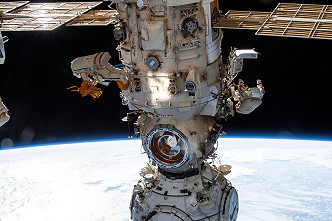 |
 |
 |
 |
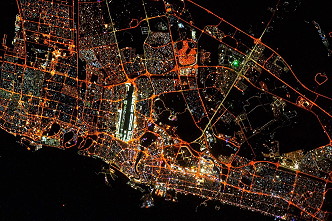 |
 |
 |
 |
 |
 |
 |
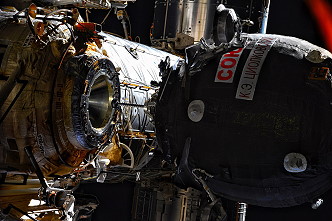 |
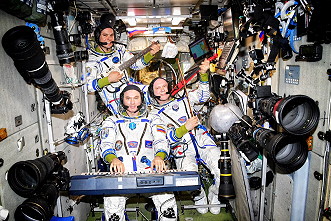 |
|
more onboard photos |
|
more EVA photos |
|
more Earth observation photos |
|
| © |  |
Last update on May 22, 2024.  |
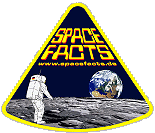 |